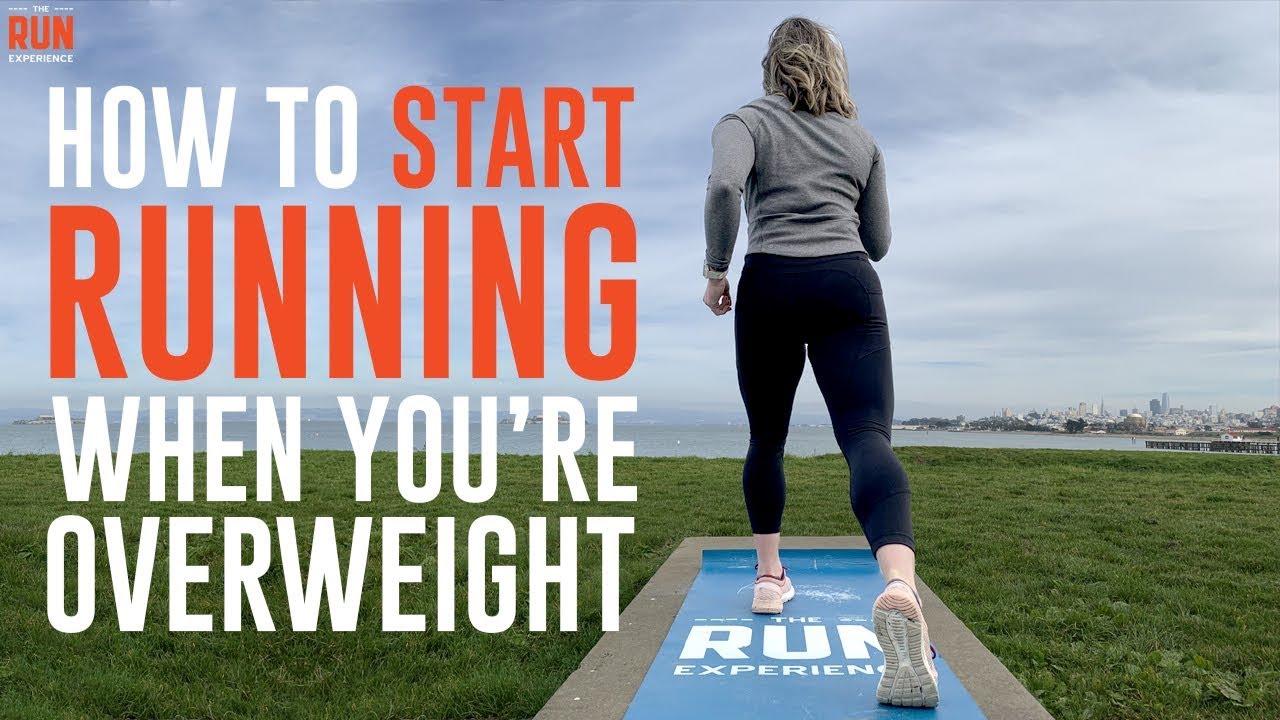How to Start Running When Overweight
To start running when overweight, begin with a combination of walking and jogging intervals. Gradually increase pace and distance over time.
Embarking on a running journey can be intimidating for anyone, especially when carrying excess weight. However, with the right approach and mindset, it can be a rewarding and empowering experience. By starting slowly and setting realistic goals, overweight individuals can ease into a running routine without risking injury or burnout.
Incorporating proper warm-ups, cool-downs, and stretches is essential to prevent strains and ensure a safe transition into regular running. Additionally, finding a supportive community or partner to join the journey can provide motivation and accountability. By listening to one’s body and making adjustments as needed, running while overweight can be a fulfilling path to improved health and fitness.

Credit: www.thefrugalexerciser.net
Benefits Of Running
Running offers a plethora of benefits, especially for those who are overweight and looking to improve their overall health. Incorporating running into your routine can:
Improves Cardiovascular Health
Regular running improves the health of your heart and circulatory system. The increased heart rate strengthens the heart, improves blood flow, and lowers the risk of heart diseases. This also helps in reducing high blood pressure, decreasing the chances of stroke.
Aids In Weight Loss
Running is an effective way to burn calories and shed excess pounds. It helps in boosting the metabolism and burning fat, leading to weight loss. Coupled with a healthy diet, running can contribute significantly to achieving a healthy weight.
Boosts Mood And Reduces Stress
Engaging in running triggers the release of endorphins in the brain, leading to an uplifted mood and decreased stress levels. It also helps in combating anxiety and depression, contributing to overall mental well-being.

Credit: beautyandthebenchpress.com
Assessing Your Current Fitness Level
Before beginning a running routine, it’s crucial to evaluate your current fitness level to ensure a safe and effective start. This involves consulting with a healthcare professional, determining your baseline endurance level, and identifying any physical limitations.
Consulting With A Healthcare Professional
- Book an appointment with your doctor or a healthcare provider.
- Discuss your intention to start running and any concerns you may have.
- Get personalized advice on how to proceed based on your health.
Determining Your Baseline Endurance Level
- Start by tracking how long you can walk comfortably without strain.
- Use a timer or an app to monitor your walking duration.
- This will give you an idea of your starting fitness level.
Identifying Any Physical Limitations
- Make note of any existing injuries or chronic conditions.
- Consider seeking guidance from a physical therapist if needed.
- Ensure you are aware of any restrictions before starting to run.
Setting Realistic Goals
Embarking on a running journey while overweight can be challenging, but setting realistic goals is crucial. Start slow, gradually increase your distance, and prioritize consistency to develop a sustainable running routine that suits your capabilities and supports your overall health and fitness objectives.
Setting Realistic Goals Starting a running routine when overweight requires setting achievable goals to ensure progress and motivation. By following specific strategies, such as gradually increasing running time and distance, incorporating walking intervals, and tracking progress, individuals can effectively kickstart their running journey.Gradual Increase In Running Time And Distance
Begin by running for short bursts of time, gradually increasing duration as fitness levels improve. This approach helps prevent burnout and reduces the risk of injuries during the initial phases of the running routine.Incorporating Walking Intervals
Alternate between running and walking to build endurance and stamina. Walking intervals allow the body to recover while still maintaining the overall workout intensity, making it easier for overweight individuals to sustain longer running sessions.Tracking Progress And Making Adjustments
Use a running app or journal to monitor running times, distances, and how the body feels. Analyzing this data helps in identifying patterns, setting new goals, and making necessary adjustments to the running routine for continuous improvement.Choosing The Right Running Gear
When starting a running routine, choosing the right running gear is crucial, especially for individuals who are overweight. Wearing the proper gear can significantly improve comfort and safety while running, enhancing the overall experience and reducing the risk of injury.
Investing In Supportive Shoes
Prioritize investing in supportive shoes that provide ample cushioning and stability, especially when you are carrying extra weight. Look for shoes with good arch support and a thick sole to absorb the shock and impact of each stride. Quality running shoes help alleviate pressure on your joints and reduce the risk of developing foot-related problems.
Wearing Moisture-wicking Clothing
Opt for moisture-wicking clothing to keep you dry and comfortable during your runs. These specialized fabrics effectively draw sweat away from the body, preventing chafing, irritation, and discomfort. Additionally, moisture-wicking clothing helps regulate body temperature, making your runs more enjoyable, especially in warmer weather.
Using A Gps Watch Or Smartphone App
Consider utilizing a GPS watch or smartphone app to track your runs and monitor your progress. These tools can help you set and achieve realistic goals, stay motivated, and gradually increase your running distance and duration. Additionally, they provide valuable data to analyze your performance and adjust your training accordingly.
Starting A Beginner Running Program
Starting a running program as an overweight individual can be intimidating, but with the right approach and mindset, it is not only achievable but also incredibly beneficial for your health and fitness. Before you set out on your running journey, it’s important to have a structured plan in place to avoid injuries and burnout. Here are some key factors to consider when starting a beginner running program.
Warming Up And Cooling Down Techniques
Warming up and cooling down are crucial components of any running routine, as they help prepare your body for exercise and promote recovery afterward. A proper warm-up increases blood flow, warms up your muscles, and reduces the risk of injury. Conversely, cooling down helps return your body to its resting state and can aid in preventing muscle soreness.
To warm up effectively, spend 5-10 minutes doing dynamic stretches such as leg swings, arm circles, and walking lunges. This will loosen your muscles and joints, preparing them for the run ahead. After your run, allow 5-10 minutes for a cooldown session. Slow your pace and incorporate static stretches, focusing on the major muscle groups used during running, like your calves and quadriceps. Performing these stretches will help improve your flexibility and minimize muscle tightness.
Implementing A Run-walk Strategy
Implementing a run-walk strategy is a great way to ease into running, especially if you are overweight or new to exercise. This method involves alternating between running and walking intervals, allowing your body to gradually adapt to the demands of running.
To begin, start with a ratio that feels comfortable for you, such as 1 minute of jogging followed by 2 minutes of walking. As your fitness level improves, gradually increase the duration of your running intervals and decrease the duration of your walking intervals. This progressive approach will reduce the risk of injury and prevent burnout, while still building your endurance and stamina over time.
Finding A Running Buddy Or Joining A Group
Running alone can sometimes be challenging, especially when you’re just starting out. Finding a running buddy or joining a group can provide you with the motivation, support, and accountability you need to stick to your running program.
Benefits of running with a buddy or a group:
- Boosts motivation and helps you stay committed to your goals
- Provides a sense of camaraderie and makes running more enjoyable
- Offers the opportunity to learn from and share experiences with other runners
Consider reaching out to friends or family members who are interested in running or explore local running clubs in your area. Running with others can make your running experience more social and fun, helping you stay on track with your program.
:max_bytes(150000):strip_icc()/running-tips-for-overweight-runners-4142348-2017-2c6e53d72e534d609e6d00fb3112f897.jpg)
Credit: www.verywellfit.com
Frequently Asked Questions For How To Start Running When Overweight
Can I Start Running If I’m Overweight?
Running can be an excellent exercise choice for overweight individuals, but it’s essential to start gradually and listen to your body’s cues.
What Are The Benefits Of Running When Overweight?
Running can help you shed pounds, improve cardiovascular health, boost mood, increase energy levels, and build strength and endurance.
How Should I Start Running If I’m Overweight?
Begin with brisk walking or a combination of walking and running, gradually increasing intensity and duration over time. Consult a healthcare professional for personalized advice.
Conclusion
Starting a running routine when overweight can be a challenging yet rewarding endeavor. Taking gradual steps, seeking professional advice, and finding supportive communities are key components for a successful start. With dedication and perseverance, one can achieve personal health and fitness goals.
Embracing this journey can lead to a positive transformation in both physical and mental well-being.






